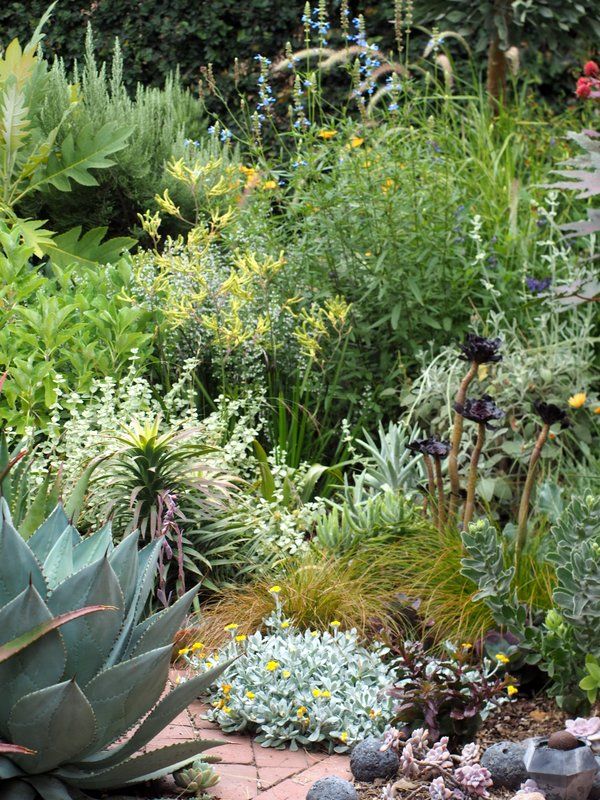
I’m going to try a systematic approach, so bear with me. Right outside the office, the planting is getting some height from the bog sage, kangaroo paws, and Pennisetum ‘Skyrocket’ showing a few blooms way in the back.
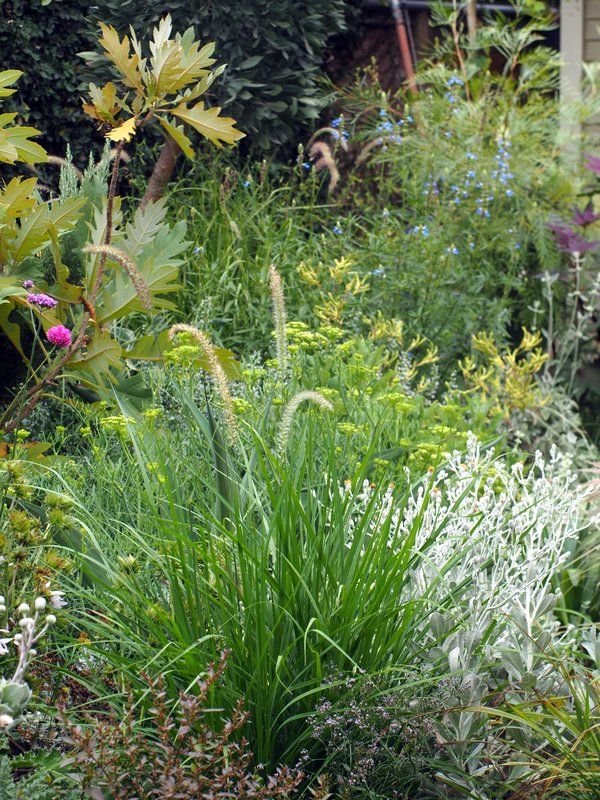
Using the bocconia as a reference point, swinging east, away from the office, the Crithmum maritimum, an almost succulent-like umbellifer, is in bloom at the base of the bocconia. The grass in front of the crithmum, Pennisetum ‘Fairy Tails,’ is just getting started.
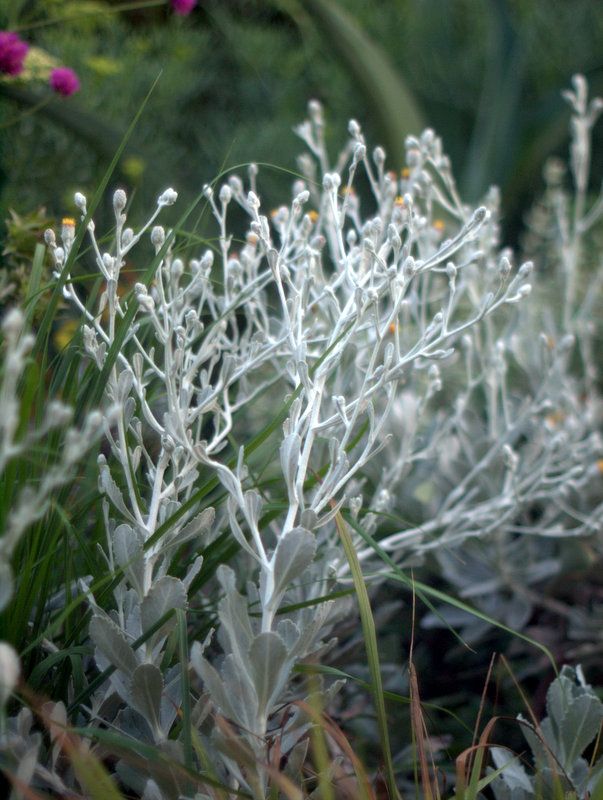
Silvery plant to the right of P. ‘Fairy Tails’ is the Island Bristleweed, Hazardia detonsa, endemic to the Channel Islands off Ventura, Calif. The tiny golden paint brush blooms are only interesting insofar as they elongate and further develop the plant’s architecture. I love the overall effect.

Closeup of the crithmum.

Before leaving the office planting, I want to give a shout out to Calamintha ‘Montrose White.’ Frustratingly difficult to get a decent photo of the clouds of tiny white flowers. But so cool and Grace Kelly elegant. The bees and I are wholly smitten. It is by far the best bee plant in the garden.
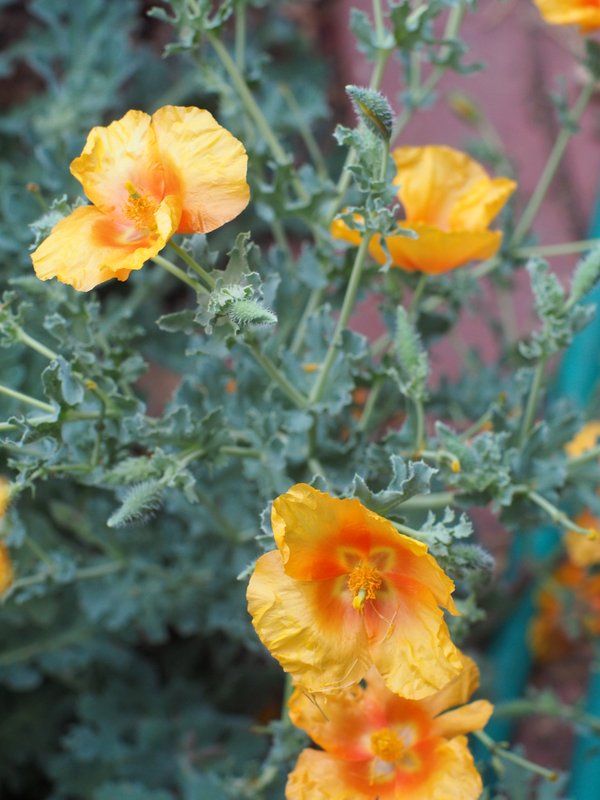
A second clump of Glaucium grandiflorum has just started blooming behind the calamint.
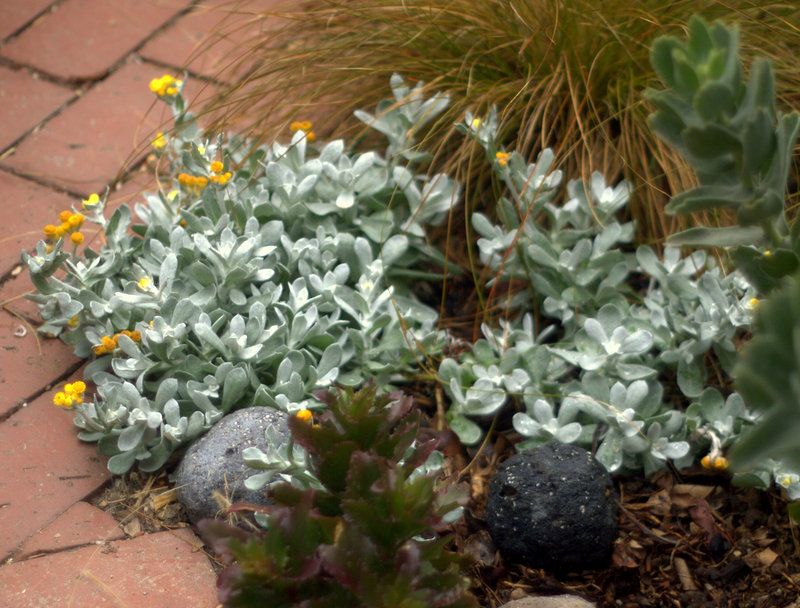
In the foreground of the first photo is this amazing, silver-leaved mat-grower whose name I never committed to memory. It may have once been known as a helichrysum. Hasn’t every silver plant? Sold as a summer annual, it would be perennial here in zone 10. Even though planted spring/early summer during some easy-going temperatures, this one gave me the same trouble as Stachys ‘Bella Grigio.’ Both collapsed after a couple days in the ground. I pulled them out, set them in the shade, where they surprised me by fully recovering. In both cases, the soil mix was incredibly fast draining. The heavier garden soil was wicking away all the moisture. After recovery, the mat grower was moved back into the garden. Some careful hand watering has helped to reveal its true and sturdy dry garden temperament.
(edited to add mat grower’s identity: Chrysocephalum aplicata. thanks, Hoov!)
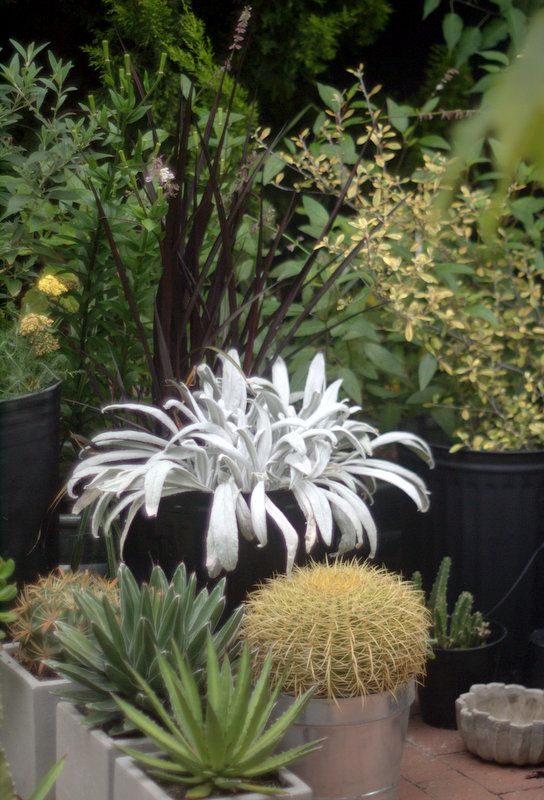
The stachys will reside in a container for summer, and if it makes it to fall I’ll reappraise options for a spot in the garden. I asked the nurseryman if this stachys was the real deal, as in is it trustworthy enough for use in landscaping projects? He assured me that it was. I remain unconvinced.
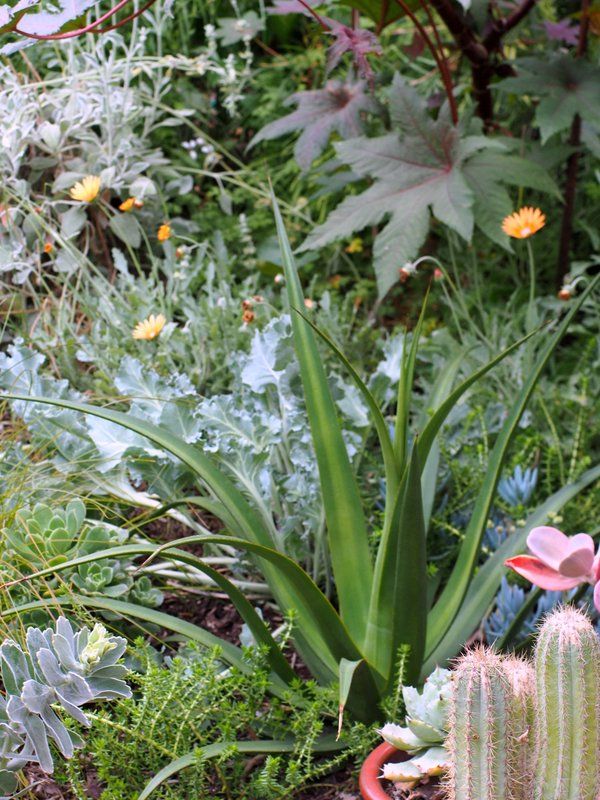
Still near the office, Agave ‘Mateo’ with the Crambe maritima (that never blooms), orange arctotis, Ricinus ‘New Zealand Purple,’ succulents, sideritis.
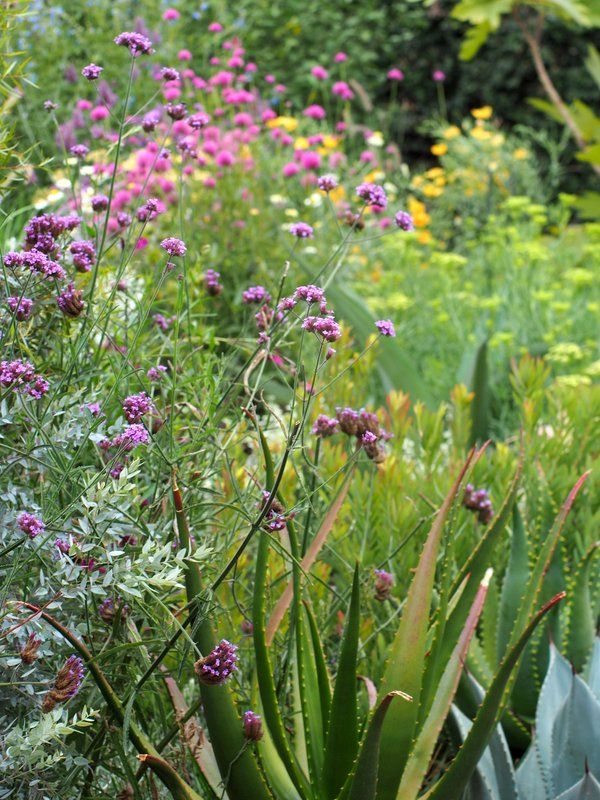
Verbena bonariensis finds support among aloes and agaves — as do I! (Okay, I’m officially ditching that impossible systematic approach now.)
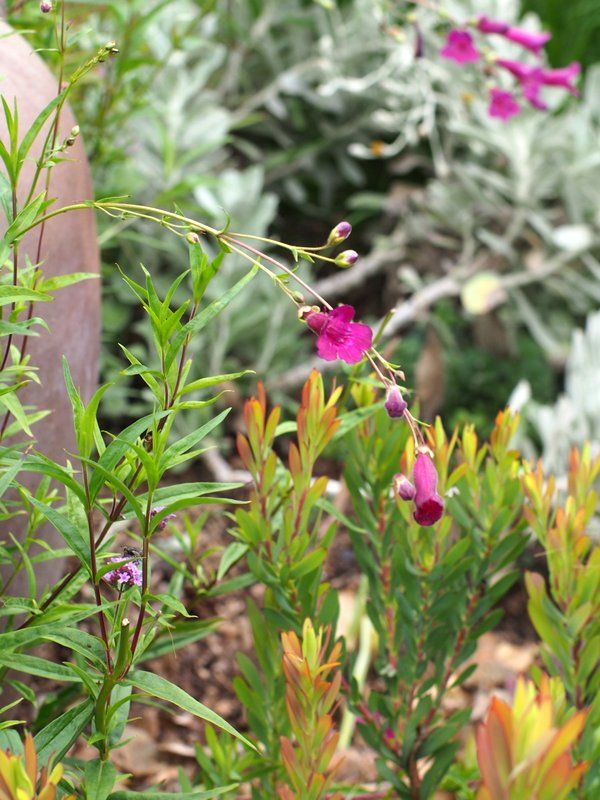
Penstemon ‘Enor’ had the usual problems with budworms blasting the flower buds before opening, but the wasps seem to have sorted it all out now. My theory is whatever insecticide suppressant is in use at nurseries wears off soon after planting. As ever, I’m always thankful for parasitizing wasps and hungry birds.
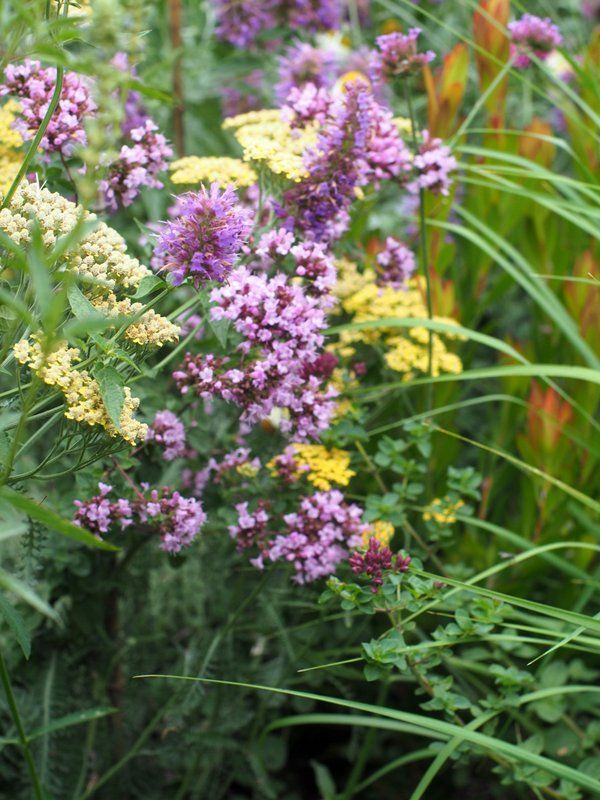
Origanum ‘Rosenkuppel’ in the center, with yarrow and agastache.

Yesterday I took out the largest planting of this oregano to try out Sedum ‘Blue Pearl.’ The oregano is a demure evergreen mat all winter but leaps into alarmingly expansive growth in summer. It suffocated a grevillea and threatened to do the same to other neighbors. Like first world problems, similarly, these issues get filed under small garden problems.
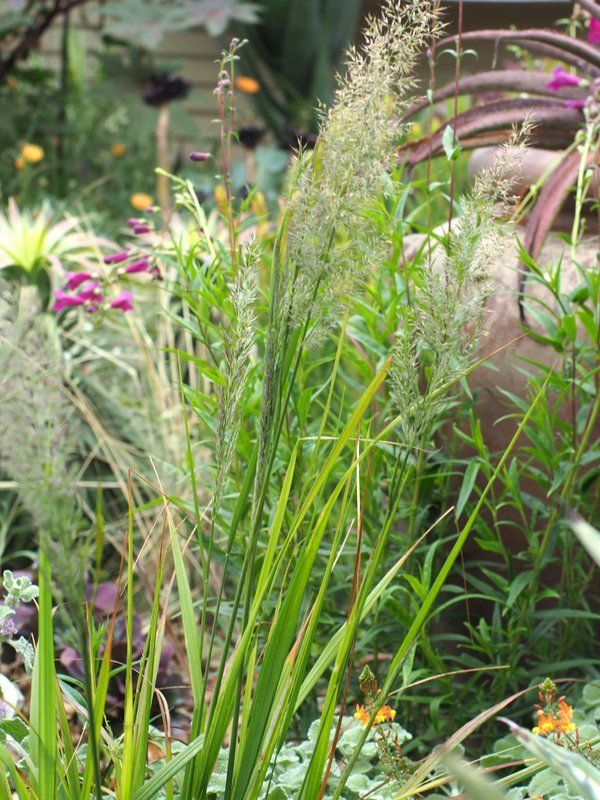
Calamagrostis brachytricha has about five bloom stalks. Prefers moist soil, but okay on the drier side.
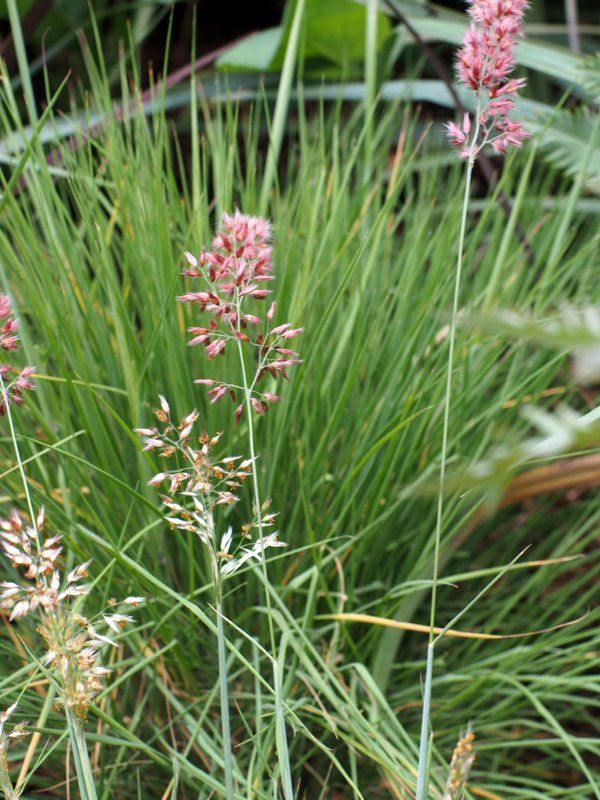
Ruby grass, Melinus nerviglumis, was recently added to fill gaps where I took out a couple clumps of Elymus ‘Canyon Prince.’ I love the elymus, but it also needs a bigger garden to develop and play out its rhythms. And possibly a more wind-exposed site. One clump of elymus tentatively remains.

And yes, Margaret, there is a fast-blooming puya. Not the sexiest, but the quickest to bloom. And Puya laxa’s very prickly leaves are like silvery tillandsias for full sun. It’s a notorious spreader, so it remains in a pot. Since this photo, a navy-blue flower has opened, barely discernible in the overall scheme of things. Even though it’s not one of the flamboyant turquoise beauties, I do appreciate the quickness to bloom, tall, stemmy structure, and the gorgeous leaves.
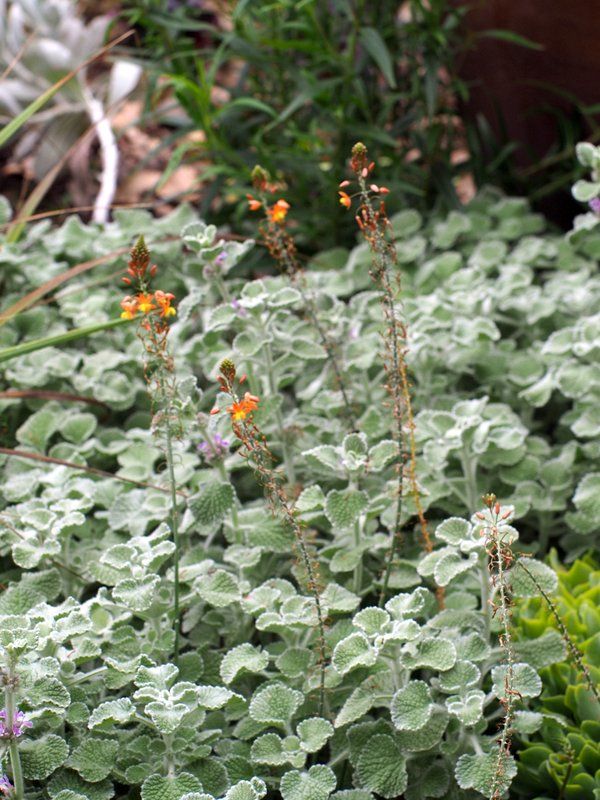
Bulbine ‘Athena Compact Orange’ blooming through a carpet of horehound, Marrubium supinum.
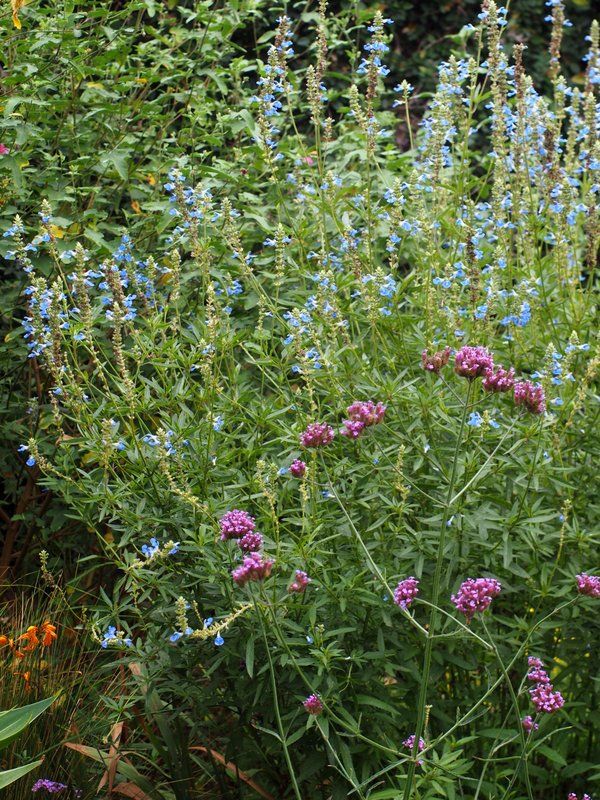
A second clump of bog sage mid garden with Verbena bonariensis. The black bumblebees and hummingbirds go for the bog sage, the butterflies favor the verbena. The bog sage, Salvia uliginosa, has elbowed out Crocosmia ‘Solfatarre’ this summer, so there will be some shifting around this fall.
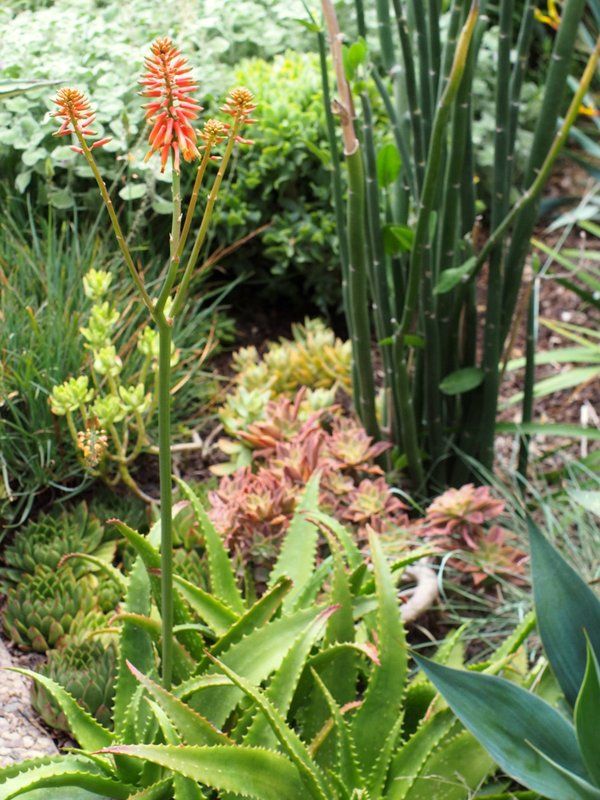
Just giddy about summer-blooming Aloe ‘Cynthia Giddy’
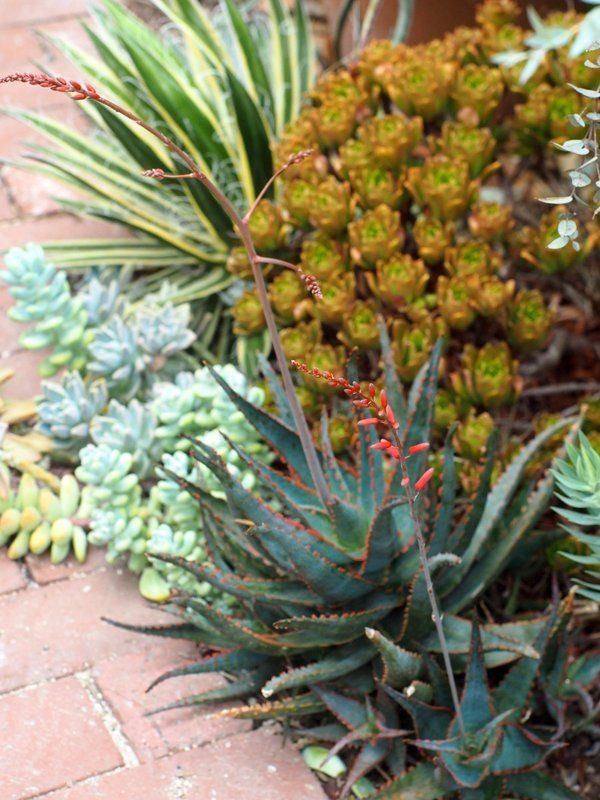
Possibly Aloe ‘Christmas Cheer’ giving off some July cheer too.
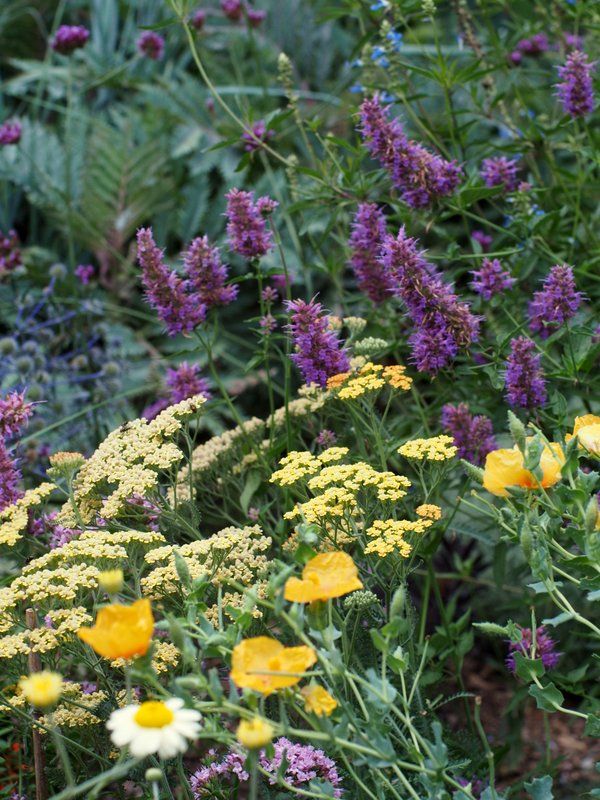
Mid garden crescendo with Agastache ‘Blue Blazes,’ Achillea ‘Terra Cotta,’ eryngium, glaucium, oregano, verbena, anthemis, bog sage, melianthus.
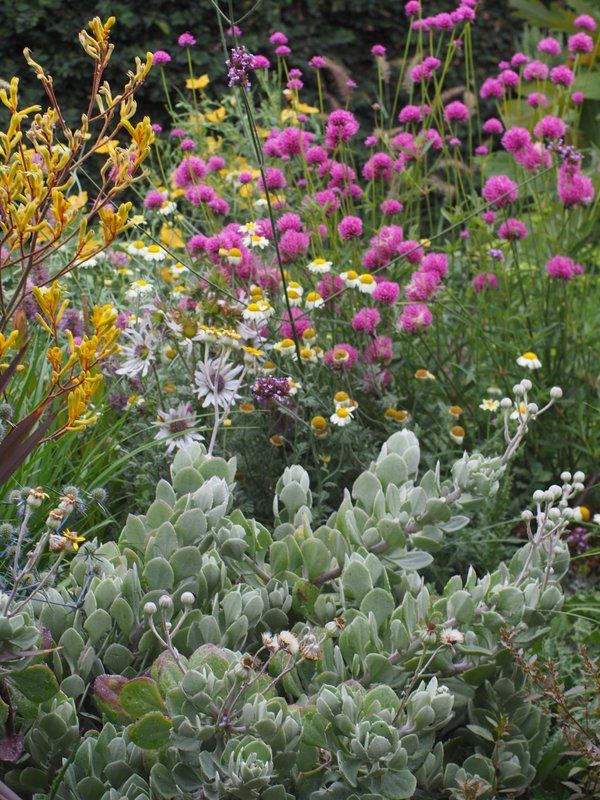
Indefatigable Gomphrena ‘Fireworks’ bulwarked by Senecio medley-woodii. Anthemis ‘Susannah Mitchell, kangaroo paws. Berkheya purpurea obligingly keeps sending up one bloom truss after another.
And that, give or take, is a wrap on July’s Bloom Day. Check out our host’s site May Dreams Gardens for more blog contributions to July Bloom Day.

So many nifty plants, the Hazardia, Glaucium, and I love the name (and plant) Crithmum. The silver mat is Chrysocephalum aplicata, maybe?
You mix your plants so well, even better together than in isolation.
My Puya is ten, I wonder it will ever bloom!
So beautiful! I’m especially crazy for your silver plants. The mat former is a showstopper. I think I first saw Stachys Bella Grigio on your blog, but found that culture and hardiness information appeared to be nonexistent on the web. I saw it for sale as an annual here in Ohio last year, but it was more money than l wanted to pay for something about which I had zero information. Love the look.
Can you grow Marrubium rotundifolium in your climate? It doesn’t last forever here because of the wet and humidity, but it is a killer plant that I don’t mind replacing periodically.
cheers
Denise, it looks so inviting. The variety of plants you can grow in zone 10 is wonderful – I really enjoy seeing many that I can’t grow here in zone 7 or 8. That Salvia uliginosis I found at Joy Creek where I work and I’m looking for the perfect spot to plant it. Thanks for turning me on to it!
Hoov, that’s exactly the name! I kept using a search string “silver leaves chrys” but nothing would fill in. I’m going to amend the post, thanks.
@Tim, I’ve edited to add the identity Hoov provided, Chryocephalum aplicata. Her blog’s back pages said it tired itself out after 3 years, if I read correctly. Pretty good run. I love the horehounds and will look for rotundifolium, thanks.
@Tanara, I think you win as far as best access to shopping for plants! A lot of people will steer you away from the bog sage because it can travel. In my heavy soil it stays put but does expand its girth quickly and needs splitting every couple years. Tolerates my dryish conditions very well and stays upright, but I’ve heard in wetter gardens it can flop.
You’ve got some lovely combinations going. My favorite is the Agastache, Achillea, Origanum, Glaucium mix. Remembering how well Pennisetum ‘Skyrocket’ did in your garden last year, I picked up 3 plants in spring this year when I saw them. Sadly, while they’re not dead, they’ve done virtually nothing, probably due to inadequate water (although being dug up by the neighborhood raccoons a few times didn’t help). Perhaps I’ll lave to try ‘Canyon Price’, provided I can find it.
Kris, if/when I pull out the elymus I’ll save it for you. You could break it up into a few clumps. I bet it would love your exposed site. Really cool steely blue leaves.
Just stunning!
The last two pictures are just dazzling combinations — great planting *and* photos.
But also grabbing me is the wonderful self-echo of the spiny edges with the bloom of Aloe ‘Christmas Cheer’.
And the mad twistiness and textures and rich color contrasts in the Puya laxa vignette.
And the icy lemon-sherbet effect of those kangaroo paws with silvery calamint. And the pastel pink spines of a cactus echoing a pink succulent…
It struck me for the first time how many pastels there are in your garden, what with the glaucousness and silver and all, but there’s nothing sugary or precious about any of it. Some of the counterweight is the effect of intense punches of color from Glaucium, Gomphrena, and the dark aeoniums, but it’s also that the harmonizing pastel tones focus attention on the different shapes and textures, masterfully arranged.
At least right this minute; danged things keep *growing*…
And the
Up here we’ve been told Stachys ‘Bella Grigio was the “real thing” too. Everyone laughs at that notion.
Your garden holds so much beauty, intrigue and mystery, I could get lost in it. This was a phenomenal post.
Hi there, I have just purchased Stachys bella grigio and intend growing it in a sandy loam soil in NZ. How do you think it might go? do you have any more info on it? Brenda
Brenda, sandy loam sounds like the right idea. I’ve only been able to find anecdotal info on it, that it’s a touchy plant, so you may have to trial it more than once! Mine is surviving in a container, free-draining potting soil, almost full sun.
Hello!
I don’t know if you’ll see this, or if it’s too late (I just now found your blog…), but I wanted to make sure I understand.
Is the plant with blue flowers behind the Calamintha Montrose … Salvia uliginosa? I googleimaged it and I think so, but I wanted to be sure. It’s a knockout. I love blue flowers.
You have a beautiful garden and blog!
Hello, N! Yes, the blue flowers behind the calamint belong to Salvia uliginosa, one of the easiest salvias to grow. It can be a thug depending where you garden and how much summer rain you get. Here I get no summer rain, so it stays upright and sways just like a grass. Thank you for your kind words!